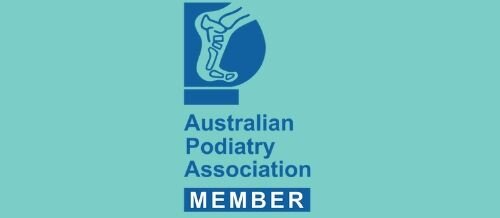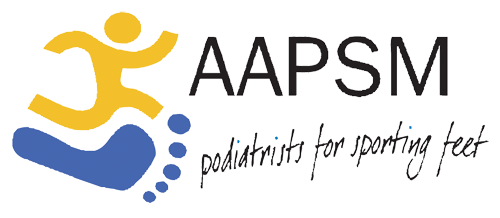Heel Spurs
If you’re experiencing sharp pain under your heel, especially first thing in the morning, then there is a good chance you might be dealing with a heel spur.
Heel spurs are a common cause of persistent heel pain, which is often linked to inflammation or stress on the foot. At Gold Coast Foot Centres, our experienced podiatrists provide patients with expert diagnoses and tailored treatment plans that help them find fast relief from this condition.
Whether it results from overuse, poor foot mechanics, or tight calf muscles, we’ll help get to the root of your foot and heel pain. Then we will guide you through the most effective, non-invasive recovery options.
What Is a Heel Spur?
A heel spur is a bony growth that forms under the heel bone. Typically, it occurs where the plantar fascia connects to the heel and develops as a consequence of long-term strain on the foot muscles and ligaments.
While heel spurs and plantar fasciitis are closely related, they are not the same. Plantar fasciitis is the inflammation of the tissue along the bottom of the foot. A heel spur, on the other hand, is a calcium deposit that may or may not cause pain.
In many cases, people experience both conditions together. For this reason, it is essential to get an accurate diagnosis of your condition from a podiatrist.
Common Signs & Symptoms of Heel Spurs
Heel spurs can cause a range of discomfort, but the most common symptom is a sharp or stabbing pain under the heel. As mentioned, people tend to experience this the most first thing in the morning when they take their initial few steps.
This pain often eases as you walk, only to return after long periods of standing or rest. In fact, many people describe it as a dull ache that worsens with activity. Some also notice localised tenderness or sensitivity when pressing on the bottom of their heel or experience swelling or a slight warmth in the affected area.
If left untreated, the pain may become more persistent. As a result, everyday activities like walking or exercising become increasingly difficult.
What are the Main Causes of Heel Spurs?
People with flat feet or high arches are among the most common sufferers of plantar fasciitis. That is because these afflictions can increase tension around the heel.
Those who are obese or carry excess body weight are also at risk, as it places additional stress on the lower parts of their body, especially their feet and heels.
Likewise, people who regularly partake in high-impact activities like running, long-distance walking, or standing for extended periods can cause inflammation and micro-tears in the heel area.
Wearing old shoes, worn-out runners, or flat-soled sandals that do not provide much heel support is another common cause of this condition.
Heel Spurs vs. Plantar Fasciitis: What’s the Difference?
Some people might think that heel spurs and plantar fasciitis are not the same. But this is incorrect. However, they can often occur in conjunction with one another.
Essentially, a heel spur is a bony growth that forms on the heel bone. By contrast, plantar fasciitis is inflammation of the thick band of tissue (plantar fascia) that runs along the bottom of the foot.
Probably the most significant difference between the two is that while heel spurs may not always cause pain, plantar fasciitis is usually the main source of discomfort.
How We Diagnose Heel Spurs
At Gold Coast Foot Centres, diagnosing a heel spur begins with a thorough clinical assessment where our podiatrists will examine your foot. During this consultation, they will also review your symptoms and ask about your activity levels, footwear, and medical history.
To confirm the presence of a heel spur, we may also recommend imaging such as an X-ray or ultrasound. These tools help us identify bony growths and soft tissue damage. Moreover, in some cases, we may perform a gait analysis to assess how your walking pattern may be contributing to the issue.
Heel Spur Treatment Options at Gold Coast Foot Centres
At Gold Coast Foot Centres, we offer a range of evidence-based treatment options to relieve heel spur pain and prevent it from returning.
Our experienced podiatrists tailor every treatment plan to suit your lifestyle, the level of activity you do, and the severity of your condition. Here is what we offer:
Custom Orthotics
Custom orthotics are specially designed shoe inserts that support your feet and improve alignment. Specifically, they help redistribute pressure away from the heel and reduce strain on the plantar fascia.
By correcting poor foot mechanics in this way, orthotics can relieve pain and prevent future issues relating to heel spurs and other foot conditions.
Footwear Advice
When it comes to heel spur recovery, it is important to wear the right footwear. To determine what this is for you, we’ll assess your current shoes and recommend options that have proper arch support, good cushioning, and heel stability.
We will also recommend that you avoid flat soles or worn-out shoes, as doing this can make a significant difference in how you manage pain and prevent further damage.
Shockwave Therapy
Shockwave therapy is a non-invasive treatment that uses high-energy sound waves to stimulate healing in the affected area. It works to increase blood flow, break down scar tissue, and promote better tissue regeneration.
Many patients find noticeable relief after just a few sessions of this treatment, so it has become a popular option for persistent heel pain at Gold Coast Foot Centres.
Dry Needling or Soft Tissue Therapy
Targeted soft tissue therapy, which includes dry needling, can release tight muscles and reduce inflammation around the heel.
These techniques address muscle tension and trigger points that may be aggravating your condition, and they are often used in conjunction with other therapies for best results.
Exercise & Stretching Programs
Stretching and strengthening exercises can be an effective strategy in reducing stress on the plantar fascia and calf muscles.
Our podiatrists will guide you through a personalised program to improve flexibility and support the long-term health of your feet. The more consistent you are in performing these exercises, the more it will reduce symptoms.
Referral for Cortisone Injections or Surgery (if severe)
If conservative treatments aren’t proving to be effective, we may refer you for further options such as cortisone injections in an attempt to reduce the inflammation.
Surgical intervention may also be considered if all non-invasive measures are not successful.
Why Choose Us?
At Gold Coast Foot Centres, we’re dedicated to helping you get back on your feet, pain-free.
Every patient receives a personalised treatment plan that has been created around their condition, lifestyle, and goals. We also combine modern diagnostic tools, such as digital gait analysis and imaging, with the latest treatment technologies to ensure we make accurate assessments and provide effective outcomes.
Preventing Heel Spurs
The best way to avoid heel spurs is to prevent them from happening in the first place, and this starts with taking care of your feet each day.
It is a good idea to do simple stretching and strengthening exercises for the calves and plantar fascia, as they can reduce the tension you feel and improve your flexibility. At the same time, wearing footwear with proper arch support, cushioning, and a stable heel is equally important. It is not advisable to walk barefoot on hard surfaces or wear unsupportive flats or thongs for long periods.
You are also recommended to commit to regular checkups with a podiatrist, as they can help identify early signs of foot strain before they lead to a heel spur.
Book an Appointment
Ready to take the first step towards pain-free feet? Book an appointment with Gold Coast Foot Centres today. You can call us directly on (07) 5539 4484 or use our easy online booking system.
Our clinics are conveniently located across the Gold Coast, including Southport and Robina, with extended opening hours available at some to suit your schedule.
FAQs
-
Heel spurs don’t typically disappear on their own, but the pain they cause can often be managed effectively through conservative treatment. In many cases, addressing the underlying causes, like inflammation or poor foot mechanics, can relieve symptoms without the need for surgery.
-
Surgery is rarely needed for heel spurs. In fact, most people respond well to non-invasive treatments such as custom orthotics, shockwave therapy, and exercise programs. Generally, surgery will only be considered if the pain persists despite months of conservative care.
-
Recovery times vary per individual, depending on the severity of the condition and the treatments used. Some people feel an improvement within a few weeks, while others may need several months of consistent treatment and lifestyle changes before they feel anywhere near 100% again.
-
The bony spur itself is permanent unless it is surgically removed, but this isn’t always necessary. Indeed, by focusing on reducing inflammation and pressure on the heel, we can help many patients experience lasting relief without ever needing to address the spur directly.





